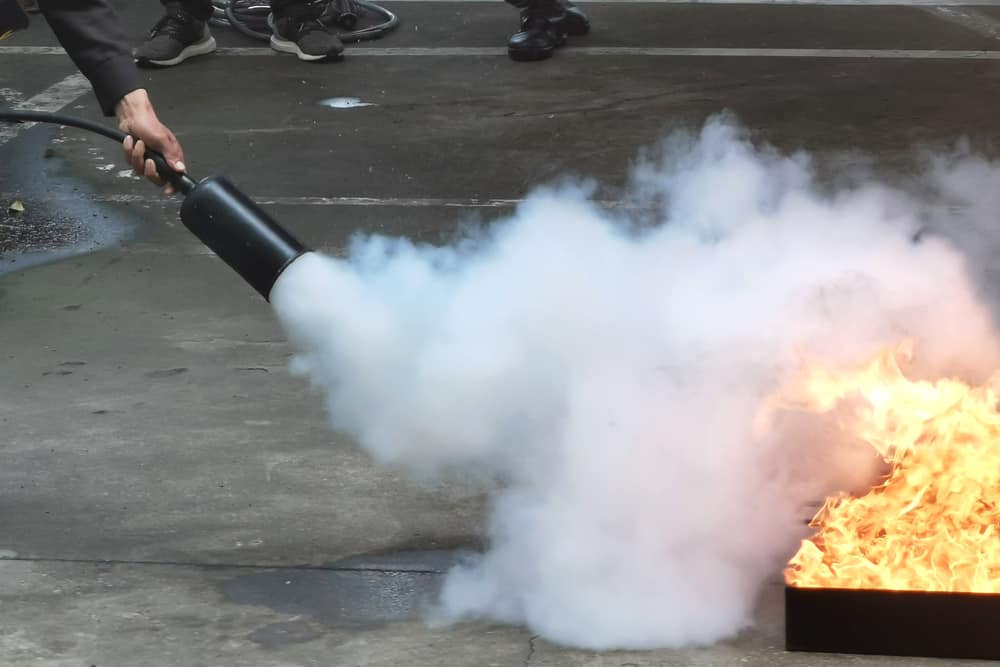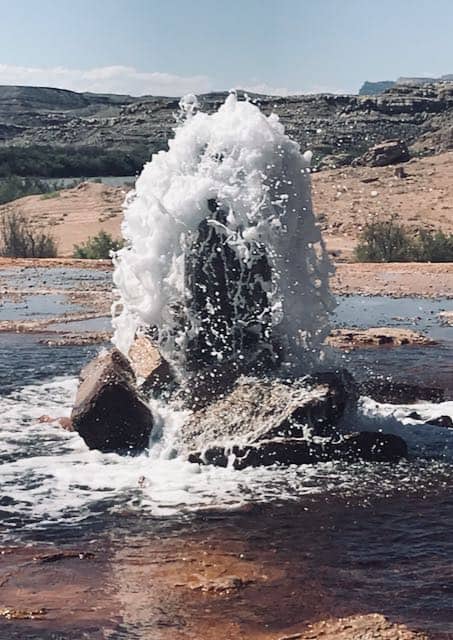Although CO2 and CO2 emissions are widely discussed topics in the public sphere, many people lack a basic understanding of the science behind this gas. Because of CO2‘s role in climate change, people have a tendency to categorize CO2 as a “bad” gas. Some assume that it is harmful or unnatural at any concentration, or that it presents excessive health and safety hazards when at ground level. In short, they are wary of CO2 because they don’t understand it—but we can help by educating them. Below are a few common concerns the public may have about CO2, followed by facts related to these concerns.
Is CO2 Hazardous to Breathe?
Just like water, CO2 plays an integral role in maintaining human life, but too much of it can be a bad thing. But how much is too much, and how likely is the average person to encounter it? The short answer is, extremely unlikely, but let’s look at the science.1Gulf Coast Carbon Center. (n.d.). Is CO2 hazardous? Retrieved 10/25/2020 from https://www.co2facts.org/faqs

The biological trigger that makes us instinctively take a breath is actually the level of CO2 in our blood, not the level of oxygen. Increased CO2 levels make our blood slightly more acidic, and the low pH stimulates receptors in our brain that make us take a breath. Thus, abnormally high concentrations of CO2 in our blood makes us breathe faster and harder. Normally this is fine, since it flushes the CO2 out of our system, but if the surrounding atmosphere has too much CO2, we will keep hyperventilating until we run out of oxygen and lose consciousness. This is CO2 poisoning, also known as hypercapnia.2Gulf Coast Carbon Center. (n.d.). Is CO2 hazardous? Retrieved 10/25/2020 from https://www.co2facts.org/faqs
So how likely are we to encounter hazardous levels of CO2? Well, the normal air we breathe contains about 400 parts per million, or 0.04% CO2. A crowded indoor setting may contain twice that, still with no ill effects. CO2 actually needs to reach a concentration of 1% for us to begin noticing the effects at all. At that concentration a person will start to feel drowsy. At 3%, they will have an elevated heart rate, reduced hearing, and more severe drowsiness. It actually takes an 8% concentration, 200 times higher than normal, for CO2 to cause someone to lose consciousness. For perspective, let’s compare that to one of the most common causes of gas poisoning, carbon monoxide. Carbon monoxide can kill you at levels as low as 1,600 parts per million, or 0.16%! That’s 50 times more potent than hazardous CO2 levels. These numbers allow us to understand that to be hazardous, CO2 levels would have to be so elevated that they could only occur in the most extreme scenarios. They are not something that the average person needs to worry about.3Gulf Coast Carbon Center. (n.d.). Is CO2 hazardous? Retrieved 10/25/2020 from https://www.co2facts.org/faqs
Can CO2 Blow Up?
Considering CO2‘s relationship with the production and use of combustible fossil fuels, this concerns seems reasonable. However, the truth is that carbon dioxide cannot burn or explode. In fact, CO2 is compressed and stored in fire extinguishers for this exact reason!

CO2 fire extinguishers are actually superior to ones that use chemical foam because they don’t leave residue, and are particularly good at putting out electrical fires.4Gulf Coast Carbon Center. (n.d.). Can CO2 blow up? Retrieved 10/25/2020 from https://www.co2facts.org/faqs
Does CO2 Leak Naturally From the Earth?
Yes, CO2 naturally leaks from the Earth all the time, and this occurrence is actually a boon for scientists studying CCUS! The most dramatic events that leak CO2 into the atmosphere are volcanic eruptions, but there are many natural leaks that don’t always grab our attention.5Gulf Coast Carbon Center. (n.d.). Does CO2 leak naturally from the earth? Retrieved 10/25/2020, from https://www.co2facts.org/faqs
Have you ever drunk a bottle of Perrier? Then you’ve enjoyed a by-product of natural CO2 leakage! The bubbles in Perrier are due to a naturally occurring CO2 leak under a spring in Vergèze, Gard, France, where the carbonated water is bottled at the source.6Perrier. (n.d.). In Wikipedia. Retrieved 10/25/2020 from https://en.wikipedia.org/wiki/Perrier Naturally carbonated water occurs around the world, usually in springs or bodies of water that lie above subsurface magma formations.7Gulf Coast Carbon Center. (n.d.). Does CO2 leak naturally from the earth? Retrieved 10/25/2020, from https://www.co2facts.org/faqs
Another example of a natural CO2 leak is the Crystal Geyser near Green River, Utah. While most geysers generate their eruptive upwards force from geothermal heat, Crystal Geyser is a rare cold geyser that generates force from pressurized subsurface CO2.8Gulf Coast Carbon Center. (n.d.). Does CO2 leak naturally from the earth? Retrieved 10/25/2020, from https://www.co2facts.org/faqs

So, why would all these natural leaks help scientists who are trying to store CO2 securely underground? Quite simply, the ecosystems around naturally occurring CO2 leaks teach us what to look for at storage sites to detect leaks. Scientists have discovered species of plants that tend to thrive near CO2 leaks, methods for detecting soil acidity with electromagnetism, and other tools for detecting leaks. Additionally, scientists pay close attention to the geological formations present near natural CO2 leaks—they show where not to put a storage site, often called a sequestration site. Natural leakage reveals a substrata that is not well suited to capturing and storing gas. Sequestration sites are carefully chosen where the geological formations effectively capture and retain CO2.9Gulf Coast Carbon Center. (n.d.). Does CO2 leak naturally from the earth? Retrieved 10/25/2020, from https://www.co2facts.org/faqs


